Physical Address
304 North Cardinal St.
Dorchester Center, MA 02124
Physical Address
304 North Cardinal St.
Dorchester Center, MA 02124
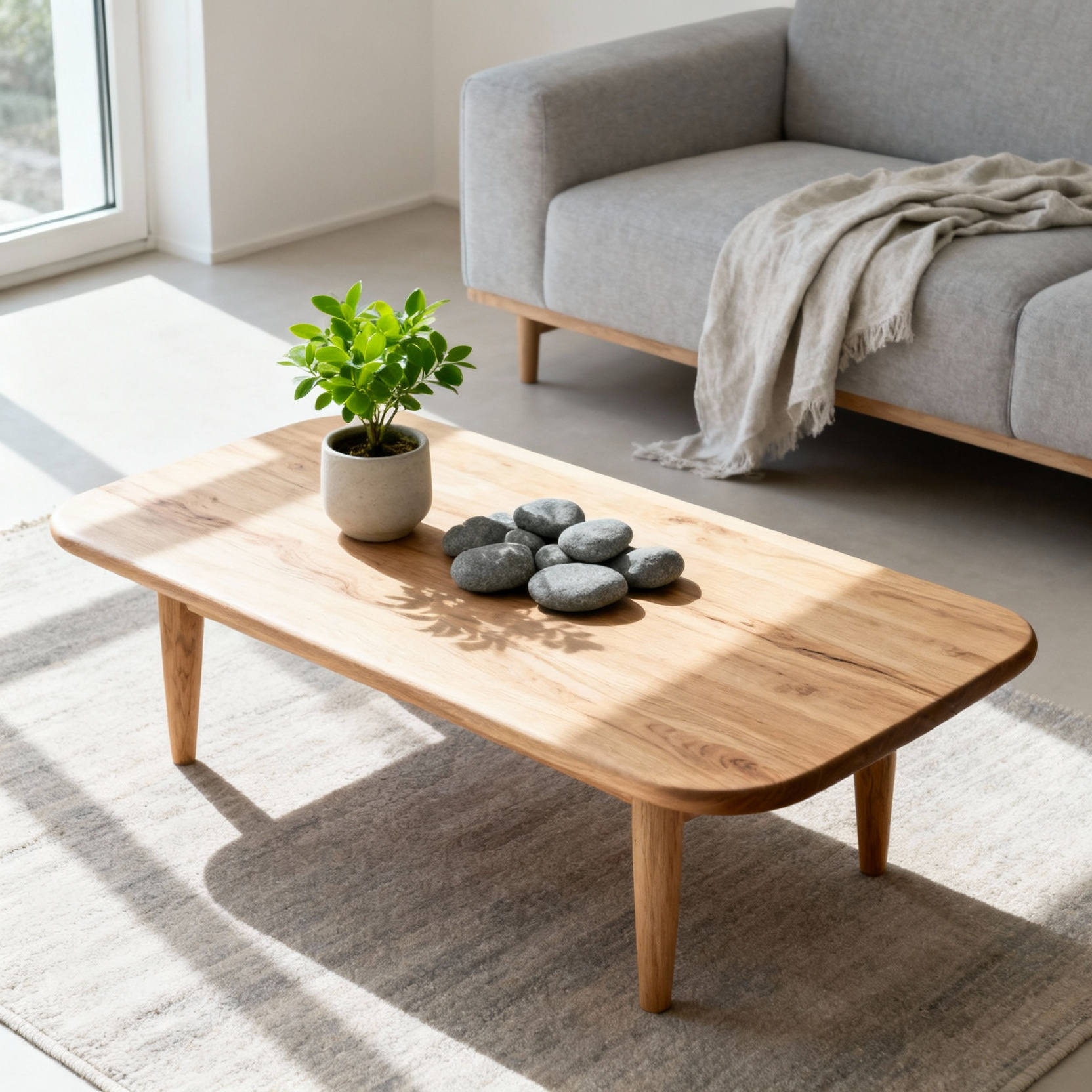
Explore 20 timeless principles for exemplary coffee table design. Create a warm, minimalist space with expert Nordic insights on materials, form, and hygge.
Since the first gatherings around a hearth, a central surface has been the quiet heart of our homes. It has evolved, of course, from a rough-hewn plank to the modern coffee table, but its role has remained the same: to anchor our lives. In Nordic design, we see the coffee table as more than furniture; it is the center of gravity for our living spaces, a platform for connection, quiet reflection, and the simple rituals that make a house a home. The most sophisticated spaces understand this dual role—a coffee table must serve our needs with quiet efficiency while also grounding the room’s entire aesthetic. Honestly, the principles that separate a truly beautiful and functional coffee table design from just another piece of furniture haven’t changed much at all. They are rooted in a deep respect for materials, human comfort, and a life lived with intention.
Before we talk about wood or shapes, we must start with the feeling we want to create. In Scandinavian design, that feeling is almost always serenity—a quiet, uncluttered calm that acts as a refuge from a busy world. The coffee table is not an accent piece; it is the very anchor of this calm.
We Scandinavians have a deep, instinctual bond with nature, born from long winters and cherished summers. Biophilic design isn’t a trend for us; it’s about bringing that essential, life-affirming connection indoors. A coffee table design rooted in this principle doesn’t just hold a plant; its very form and substance are drawn from the natural world to soothe our spirits.
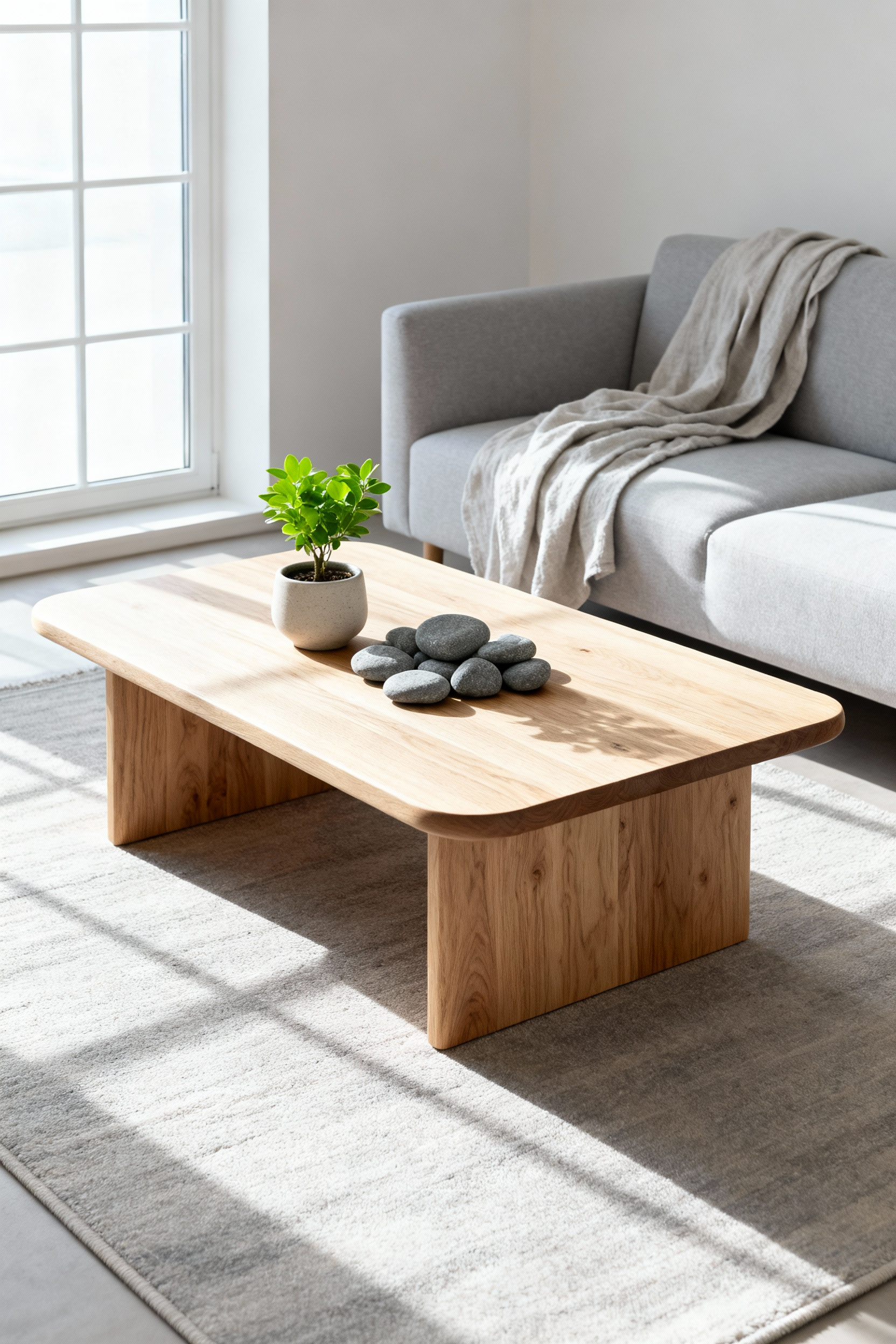
This philosophy naturally leads us to honest materials. We choose light-hued woods like ash, birch, or pale oak not just for their beauty, but for the story in their grain and the warmth they offer to the touch. It’s about feeling a connection to the forest. When we pair wood with other natural textures—the cool solidity of a slate coaster, the soft weave of a wool rug beneath—we build layers of authentic, grounding sensations. These materials age with grace, gathering a patina that tells the story of your life, which is something a synthetic surface can never do.
Building on that natural connection, we seek a profound quietude in the forms we choose. Our design philosophy champions clean, honest lines and harmonious proportions over anything loud or demanding. What I tell my clients seeking warm, minimalist spaces is to look for shapes that allow the eye—and the mind—to rest. It is a conscious turning away from visual noise in favor of things that are beautiful in their simplicity and function without shouting for attention.
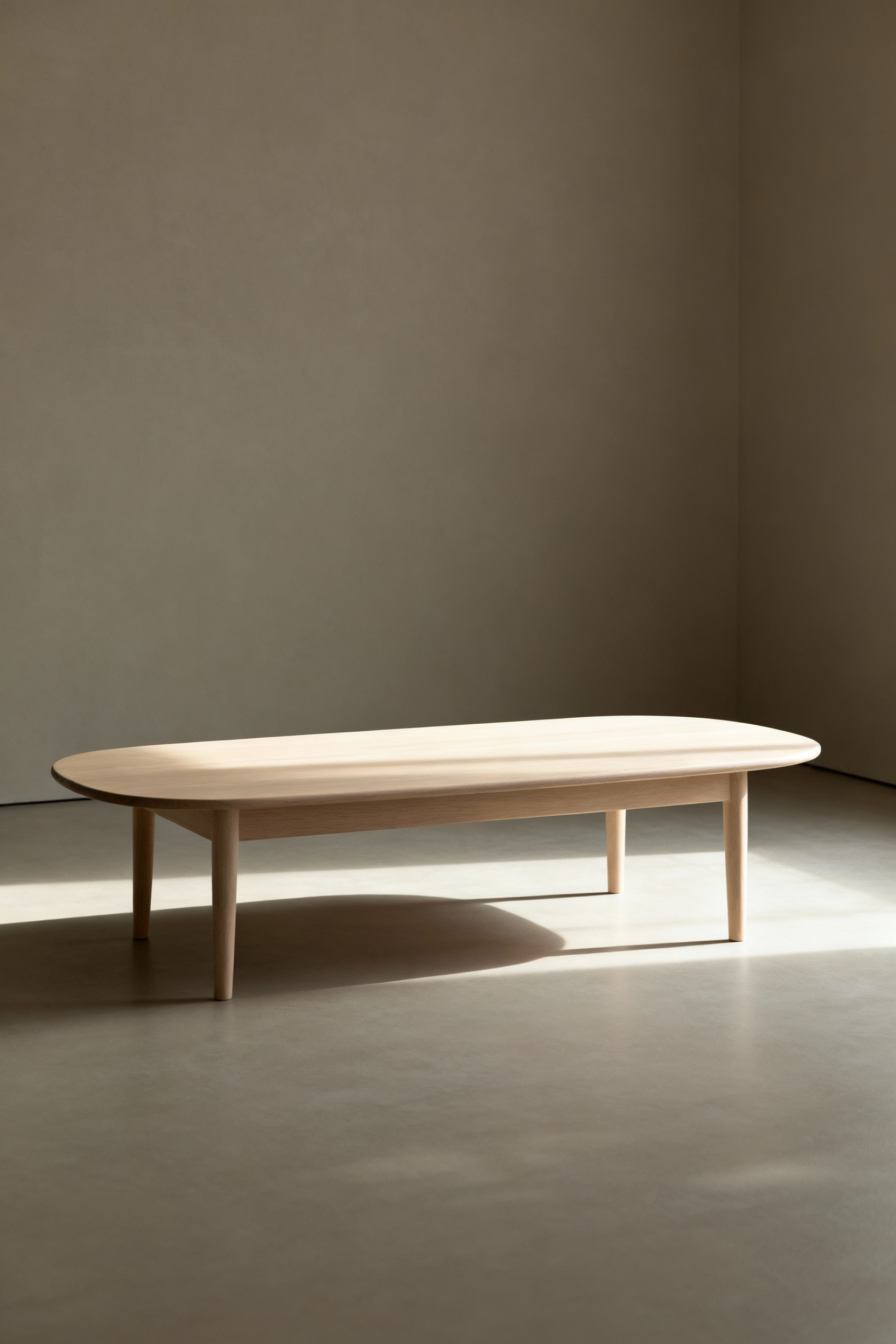
Here, the choice of material is everything. The gentle curve of a solid wood edge, sanded so smooth it invites your hand, creates an entirely different feeling from a sharp, imposing corner. The goal is often a soft, matte finish that absorbs light rather than reflecting it harshly, contributing to the room’s overall tranquility. A coffee table shaped with this restraint doesn’t need to be the center of attention; it earns its central place through its perfect, unassuming grace and its seamless fit within the room’s composition.
Intentionality goes deeper than how a coffee table design looks; it’s about the conscious choices behind its creation and its place in your home. Every joint, every curve, and every material is chosen for a reason that goes beyond function to embrace longevity, craftsmanship, and a genuine emotional connection. It is the direct opposite of fast-fashion furniture, championing enduring value and a real appreciation for the objects we live with every day.
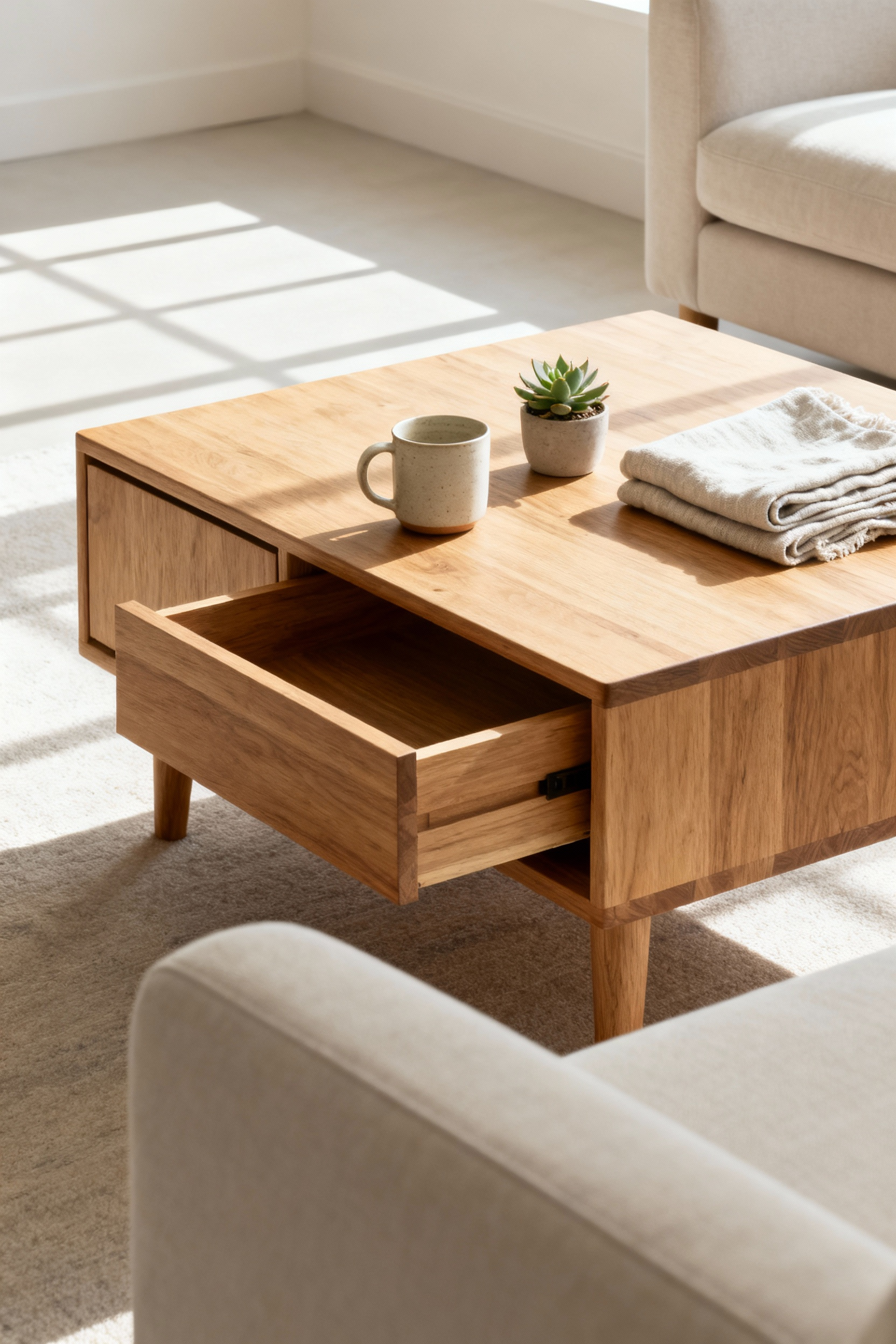
This focus means we value the story behind a material. The wood is chosen for its sustainable origins and its durability. The artisan techniques that reveal a human touch are preferred over the sterile perfection of mass production. From my work in Nordic interior design, I’ve seen how a piece with a story—a table made by a small workshop, for example—brings a different energy into a home. It’s a choice that supports a more conscious relationship with our possessions, turning simple ownership into genuine appreciation.
At its heart, Nordic design is about distilling an object to its purest purpose, stripping away everything that is not essential. This isn’t about cold minimalism; it’s about finding a deep and satisfying elegance in something that performs its function flawlessly. A coffee table design that embodies this principle becomes an almost invisible facilitator of daily life, so intuitive and well-made that you never have to think about it.

Material choices here are driven entirely by purpose. A solid oak top provides a stable, beautiful surface that needs no decoration. Slender steel legs offer immense strength without visual bulk. If there is storage, it’s integrated so seamlessly—a hidden drawer with a perfect slide, an under-shelf that holds magazines without disturbing the table’s clean lines—that it feels like a natural part of the whole. There are no elements just for show. This approach simplifies life, removing small daily frustrations and creating a clear, uncluttered environment where what truly matters—connection, comfort, and peace—can take center stage.
As we continue to build our understanding of serenity, we find that it isn’t about perfect symmetry or rigid order. True calm often comes from a more dynamic, natural balance—one that feels alive and breathes with the space.
Nature is our greatest teacher in design, and nature is rarely perfectly symmetrical. A forest finds its balance through trees of different heights and shapes, not identical rows. Bringing this principle to coffee table design means moving away from rigid, mirrored arrangements toward a more fluid and organic composition. It’s about creating a quiet visual tension that keeps the eye engaged and prevents the space from feeling static or stale.
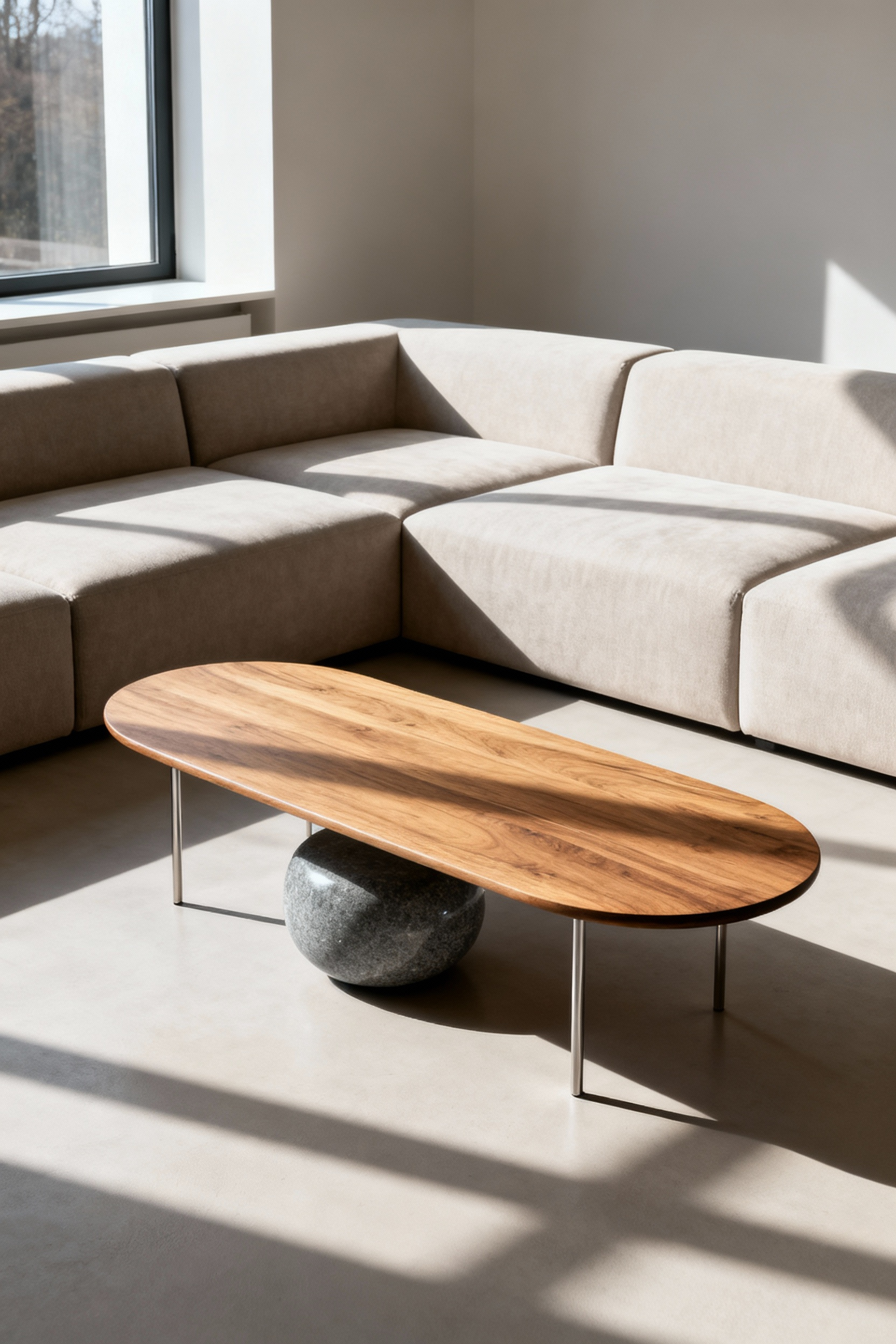
Materials with inherent character are perfect for this. A single slab of solid wood, with its unique grain and perhaps a gently irregular live edge, introduces natural asymmetry. I’ve noticed that combining different materials works wonders here: the warmth of timber on slender, cool metal legs, or a heavy stone element balanced by a lighter form. Surface styling is another place to play with this—instead of two identical candles, try balancing a tall, sculptural vase on one side with a low stack of books and a small ceramic bowl on the other. This thoughtful imbalance feels both intentional and deeply natural.
In a world filled with digital screens, the sense of touch has become more important than ever in our homes. The coffee table, so often at the center of our living space, is a primary opportunity to engage this sense. It’s about choosing materials that feel as good as they look.
The choice of wood for a coffee table design is a commitment. It’s about selecting a material with integrity that will not just last, but will evolve with you. This goes beyond appearance; it’s about a connection to sustainability and the irreplaceable warmth that only real, solid wood can bring into a home. We cherish a piece that tells a story, both of its origins and of the life lived around it.

We lean towards native Scandinavian woods like oak and ash, often treated with natural soap or oil finishes instead of thick, glossy lacquers. Why? Because these finishes allow the wood to breathe and invite your touch. An oiled oak surface feels alive under your hand. Over the years, sunlight and daily use will slowly deepen its color and develop a unique patina. This isn’t damage; it’s character. This beautiful, natural aging process is the essence of hygge—finding deep comfort in objects that carry our stories and grow with us.
To complement the warmth of wood, natural stone brings a sense of permanence and cool tranquility to a coffee table design. It grounds a space, connecting it to the earth and geological time. Stone offers a sophisticated counterpoint to the softer elements in a room—the plushness of a sofa or the texture of a rug. It introduces an element of ancient, quiet strength.
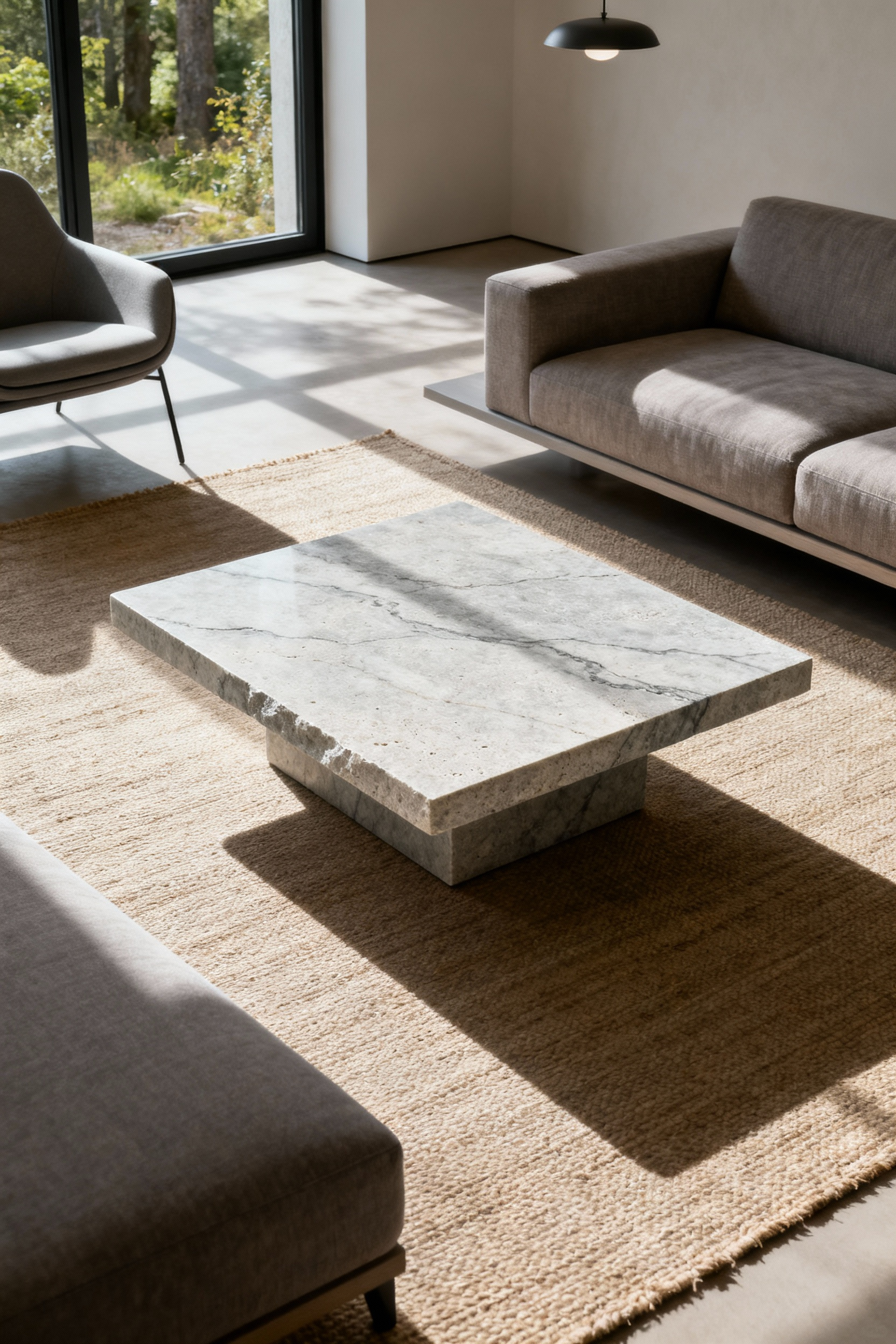
Whether it’s the dramatic veining of marble, the speckled durability of granite, or the earthy texture of slate, each stone has a unique voice. The finish is critical: a honed, matte finish absorbs light and feels soft and cool, while a polished finish reflects light and adds a touch of drama. A stone coffee table creates a powerful focal point that speaks of stability and refined taste, a dialogue of textures that makes a room far more interesting. It’s a statement of quality that doesn’t need to shout.
Metalwork in Nordic design isn’t about industrial coldness; it’s about refined strength. The goal is to use metals like steel or brass to create structures that are both incredibly strong and visually light. Metal gives us the ability to design an elegant frame that can elevate a heavy wood or stone top, making it appear to float. It’s a testament to precision and ingenuity.
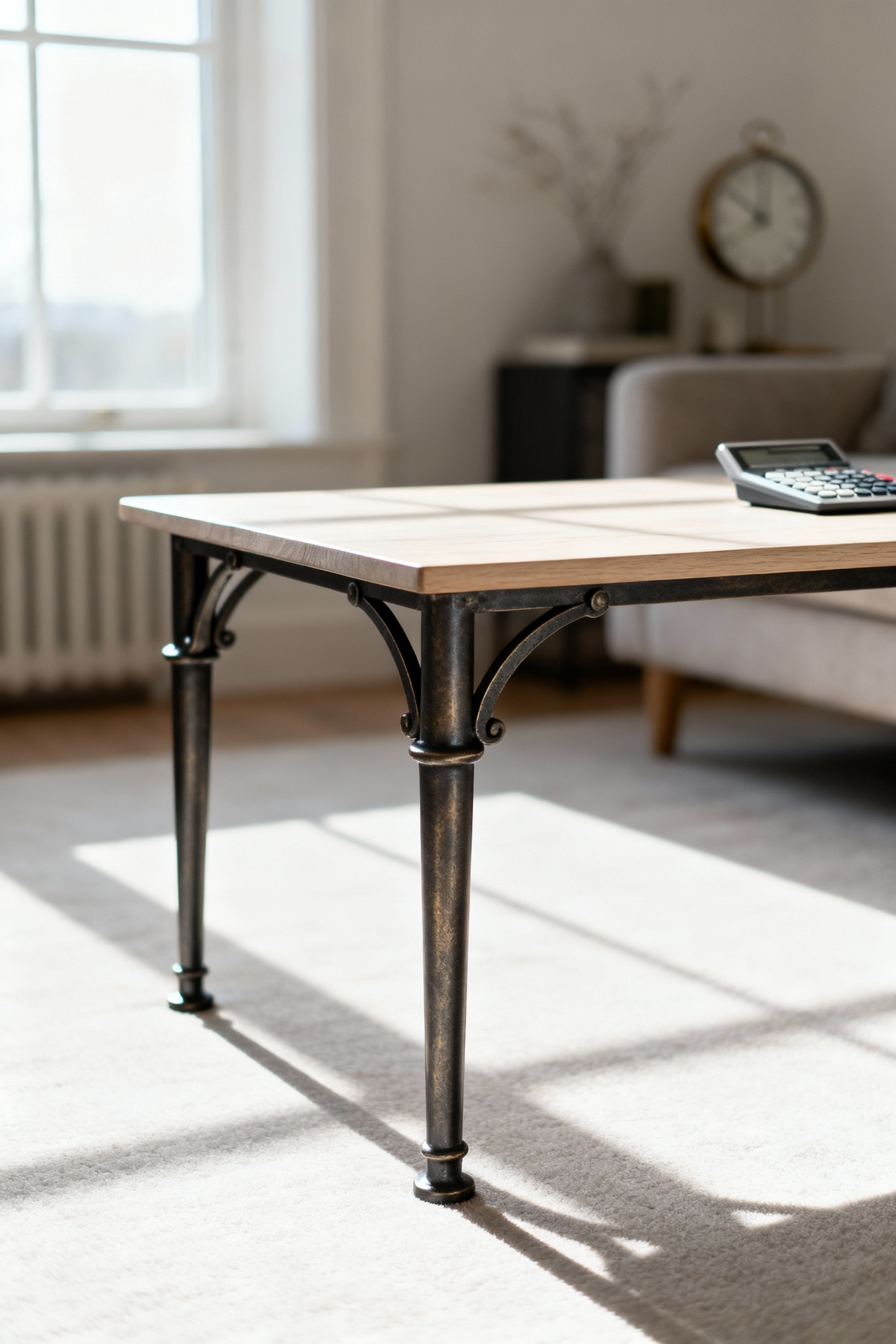
In my experience with Scandinavian design principles, a slender, black powder-coated steel base is a brilliant way to achieve a minimalist look while providing unwavering stability. The dark frame can almost disappear, putting all the focus on the beautiful tabletop it supports. Alternatively, a brushed brass frame can introduce a subtle, warm glow that acts as a delicate accent. This interplay between the sleekness of metal and the organic texture of other materials adds a crucial layer of sophistication.
Glass is a wonderful paradox in design: it’s a solid, strong surface that can feel almost invisible. Using glass for a coffee table design is a strategic choice to maintain a sense of openness and light, which is so prized in Nordic interiors. It allows light to pass through and lets you appreciate the beauty of a textured rug or wooden floor beneath it, preventing the table from visually dissecting the space.
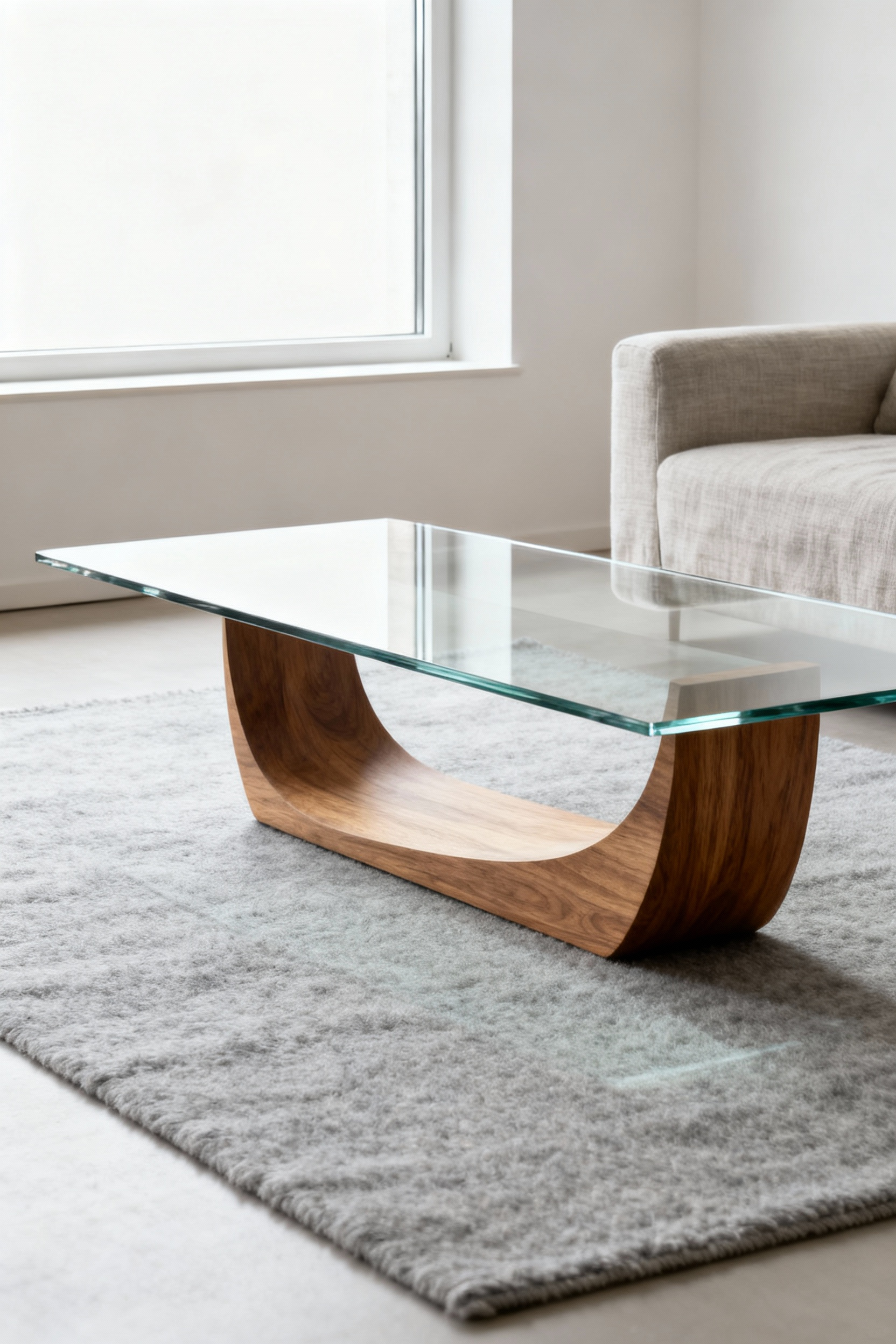
From tempered clear glass for maximum transparency to smoked or fluted glass for a touch of moodiness and texture, the options offer different levels of presence. A glass top is an exceptional tool for smaller rooms, creating the illusion of more space. It acts almost like a prism, catching and reflecting ambient light to brighten the area. This choice fosters a feeling of modern serenity, contributing to a calm, clear, and composed environment.
As we look closer, we see that the real story of a piece is told not just in its materials, but in how they are joined together. This is where true craftsmanship reveals itself, and where longevity is truly born.
The way a coffee table is put together is, for me, a matter of honesty. In the Nordic tradition, we don’t hide the joinery; we celebrate it. A well-executed mortise-and-tenon or a crisp set of dovetails is a visible declaration of quality and a promise of enduring strength. It shows the hand of the craftsperson and tells you this piece was built to last for generations, not just a few seasons.

Different joints work best with different woods, respecting the material’s natural movement and strength. But beyond their structural integrity, these details are beautiful. They add a subtle, rhythmic texture to the piece, a testament to the skill involved. To be frank, relying on hidden screws for primary joints simply doesn’t hold up, either structurally or philosophically. Choosing a piece with excellent joinery transforms a simple coffee table design into a small work of art that feels solid, trustworthy, and exceptionally crafted. It’s an investment in a piece that will stand the test of time.
A coffee table never exists in a vacuum. Its success depends entirely on how well it relates to everything else in the room. This is about creating a sense of harmony, where every piece works together to create a space that feels both beautiful and effortlessly functional.
The first step is achieving the right scale. Your coffee table design must be in conversation with your sofa and chairs. Too small, and it looks lost; too large, and it overwhelms the space. The goal is a visual balance that feels intuitive and right, creating a sense of completeness in your seating area. This is functional hygge—making sure the central piece fits perfectly with the elements meant for comfort.
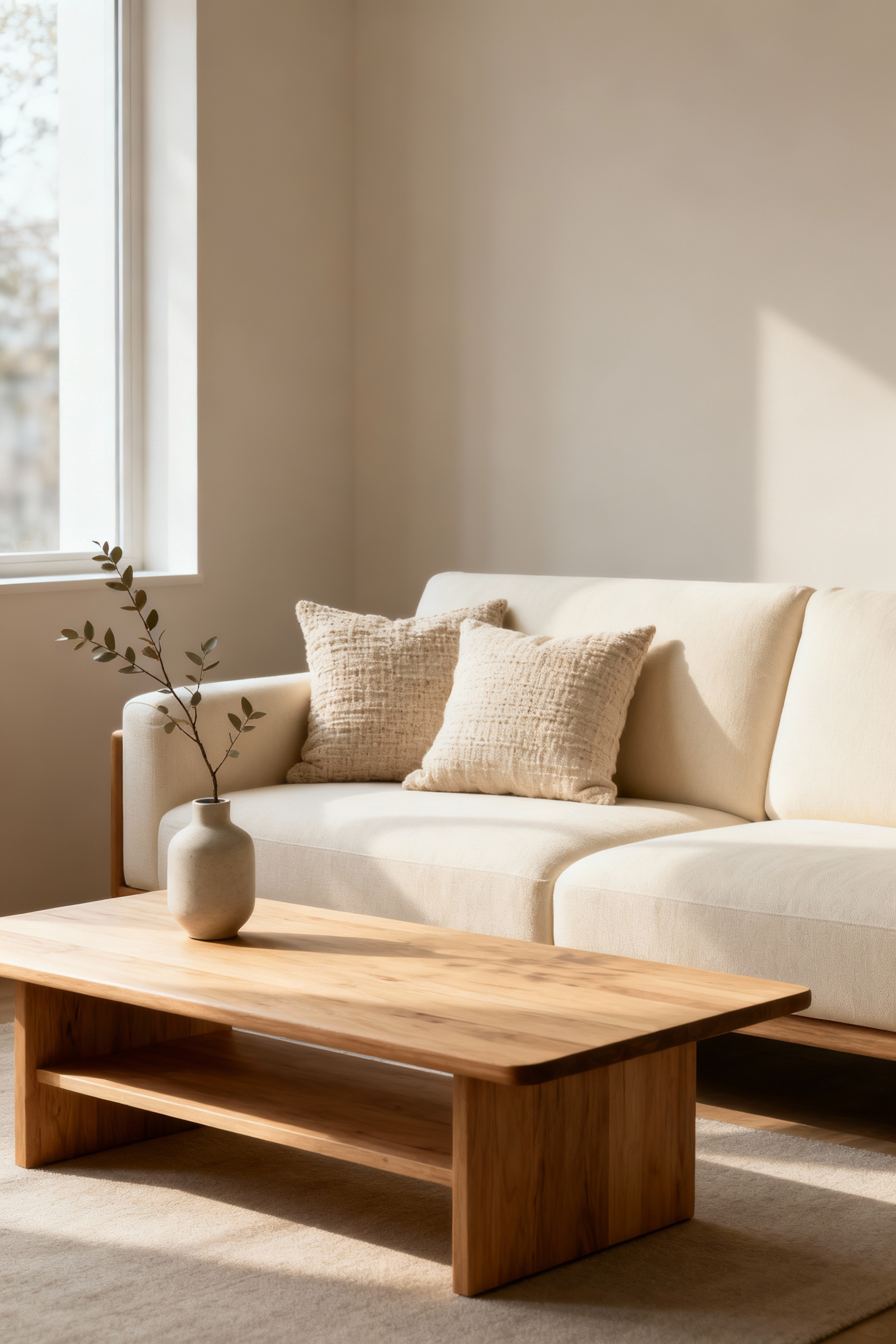
There are some good guidelines here. A coffee table should be about two-thirds the length of your sofa. Height is also crucial; it should be at, or just an inch or two below, the height of your sofa cushions. This makes it comfortable to reach for a drink or a book without straining. Finally, leave about 18 inches (or 45 cm) of space between the table and the sofa—enough room for your legs, but close enough to be useful. Getting these proportions right is a subtle art that makes a huge difference in how a room feels.
A beautiful room that’s awkward to move through isn’t a successful design. Your coffee table placement must respect the natural pathways of your home. The aim is to create a layout that feels open and intuitive, where you can walk without weaving or squeezing past furniture. This deep respect for human comfort and effortless movement is a cornerstone of Nordic design.
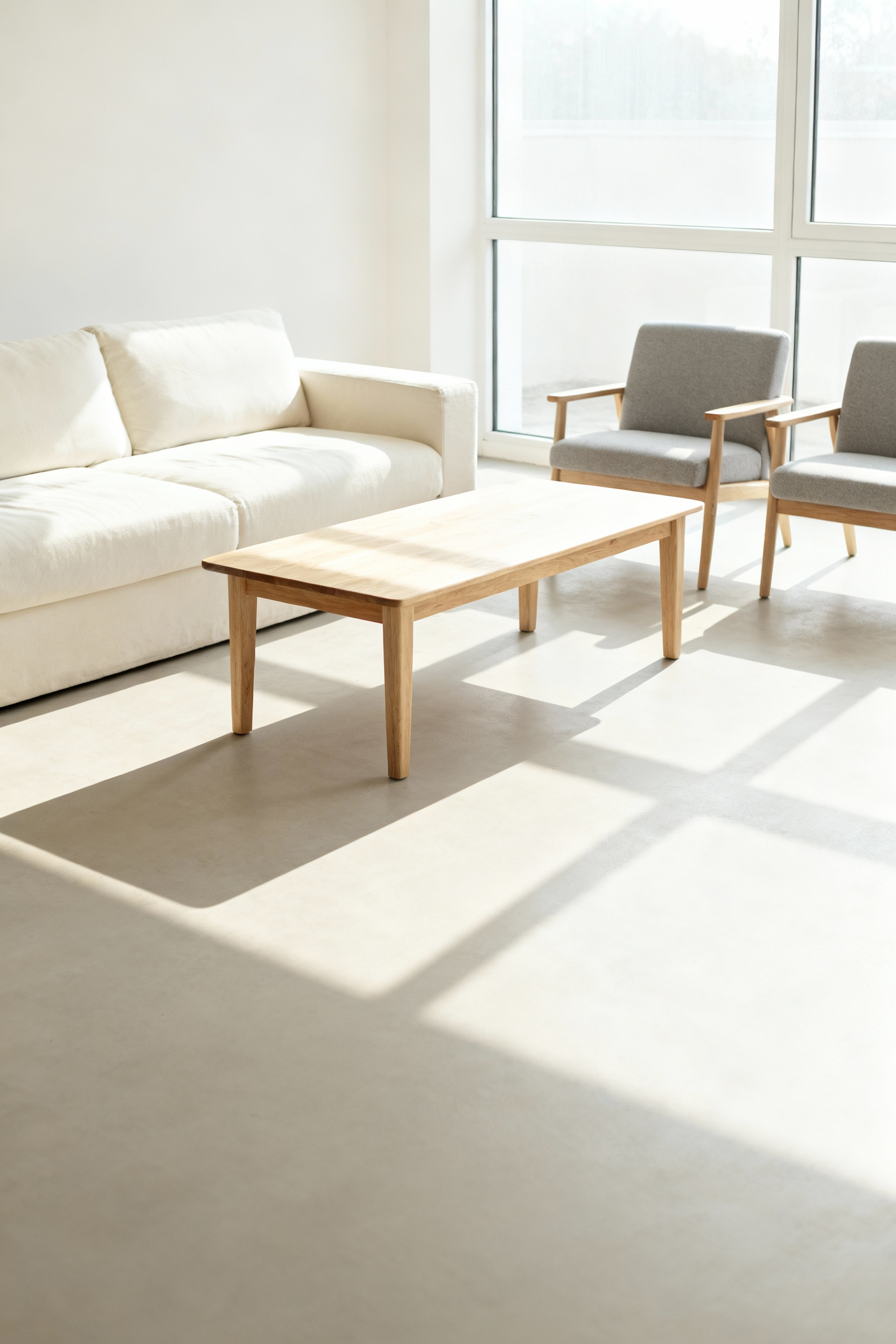
The shape and visual weight of the coffee table itself play a big role. A table with slender legs or a glass top will feel less obstructive than a solid, heavy block. Rounded or oval shapes are also fantastic for easing traffic flow, as they have no sharp corners to bump into. The key is to maintain clear, comfortable pathways around your entire seating arrangement, ensuring the space feels welcoming and accommodating, not like an obstacle course.
A room where everything is at the same height can feel a bit flat. Introducing varied heights with your coffee table design is a sophisticated way to create visual rhythm and depth. Think of it as creating a small, dynamic landscape in the center of your room. It invites the eye to wander and adds a layer of complexity that is far more engaging.
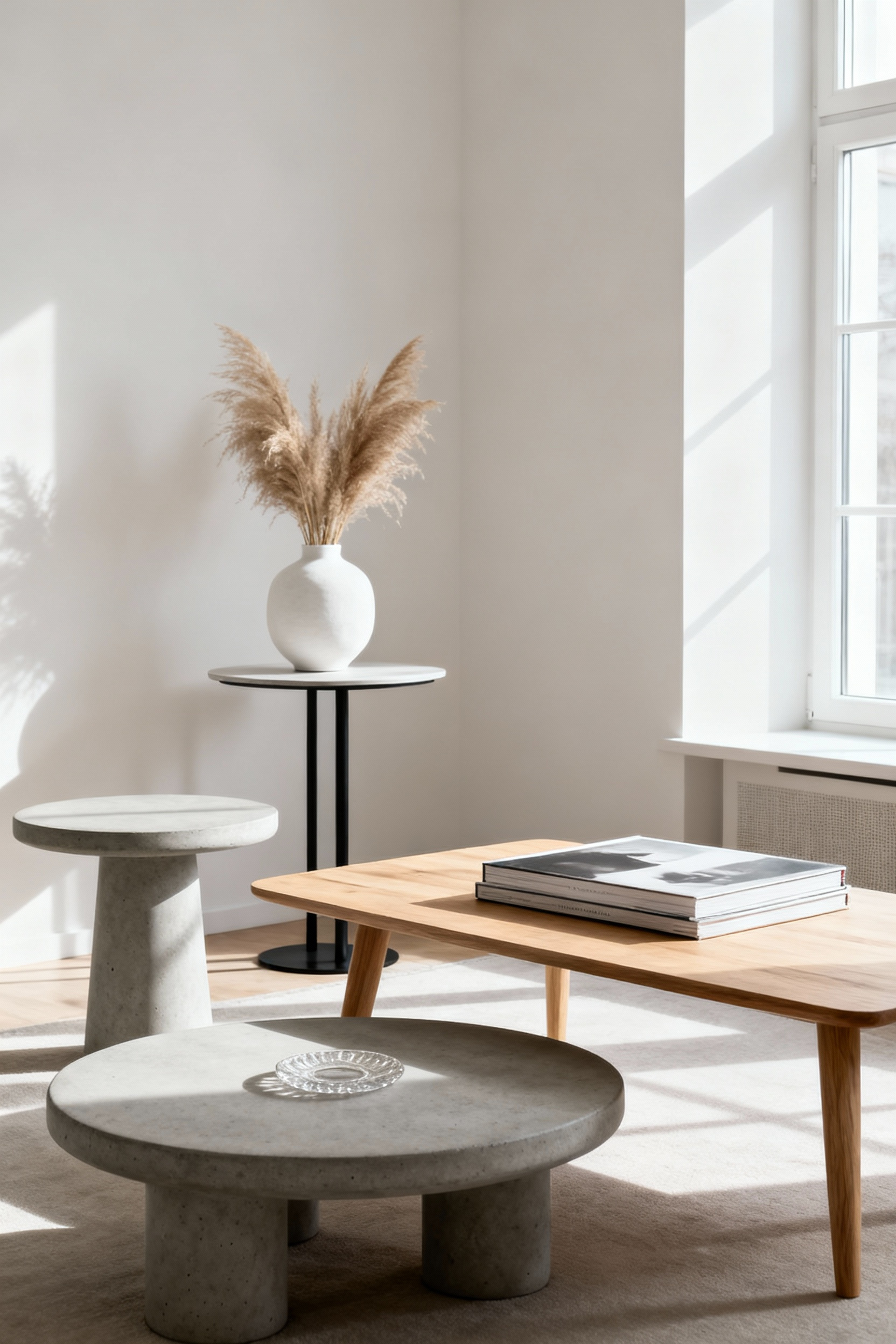
This is often best achieved not with a single table, but with a cluster. A main, low-slung coffee table paired with a slightly taller, smaller side table or a sturdy stool creates a beautiful, functional arrangement. Years of Nordic interior design have taught me that this “nesting” or “clustering” approach offers incredible versatility. You can arrange them to suit your needs—pulled apart for guests or tucked together for a cozier feel. It’s an adaptable, elegant solution that brings a sculptural quality to the space.
Light is a design tool in its own right, and a great coffee table design knows how to use it. The piece shouldn’t just sit in the room; it should interact with the light throughout the day, revealing the depth and character of its materials. This is where a room really comes alive. It’s about appreciating how an object’s personality can shift from morning to night.

Think about how the low morning sun catches the grain of a pale oak table, giving it a soft, warm glow. Later, the soft light from a floor lamp might graze the surface, highlighting its texture and creating gentle shadows. A matte surface will offer a soft, diffused look, while a polished stone might offer a single, dramatic reflection. By positioning your table thoughtfully—near a window, under a beautiful pendant light—you turn it into a dynamic element that changes and shifts, encouraging you to slow down and simply observe its quiet beauty.
As we refine our understanding of harmony, we learn that what isn’t there is often just as important as what is. The space around an object gives it definition and power, turning it from a simple object into a piece of sculpture.
Negative space—the “empty” area around and beneath your coffee table—is an active and powerful design element. It’s the visual pause that allows the table’s shape to be truly seen and appreciated. By designing with this in mind, we allow a piece to breathe. This prevents a room from feeling cluttered and gives each element its own stage.

Coffee table designs that are successful at this often have what I call a sense of “visual porosity.” They use slender legs, open frames, or cantilevered tops to carve out pockets of space, allowing light and air to flow through. This gives the table a sense of lightness and grace, even if it’s made from substantial materials. It’s a sophisticated approach that creates a feeling of calm and clarity, where the quiet interplay between solid form and open space becomes a source of beauty in itself.
Ultimately, the coffee table is not just a design object; it’s the hub around which we live our lives. It’s where we place our morning coffee, our favorite books, and the things that bring us joy. Its surface becomes a small canvas for expressing who we are and what we value.
The surface of your coffee table should be a reflection of you, not a random collection of clutter. The Nordic approach is to style it with small, intentional vignettes—thoughtfully arranged groups of objects that have personal meaning. It’s about choosing things for their beauty, their story, or their texture. This practice turns styling from a chore into a quiet, meditative act of creation.
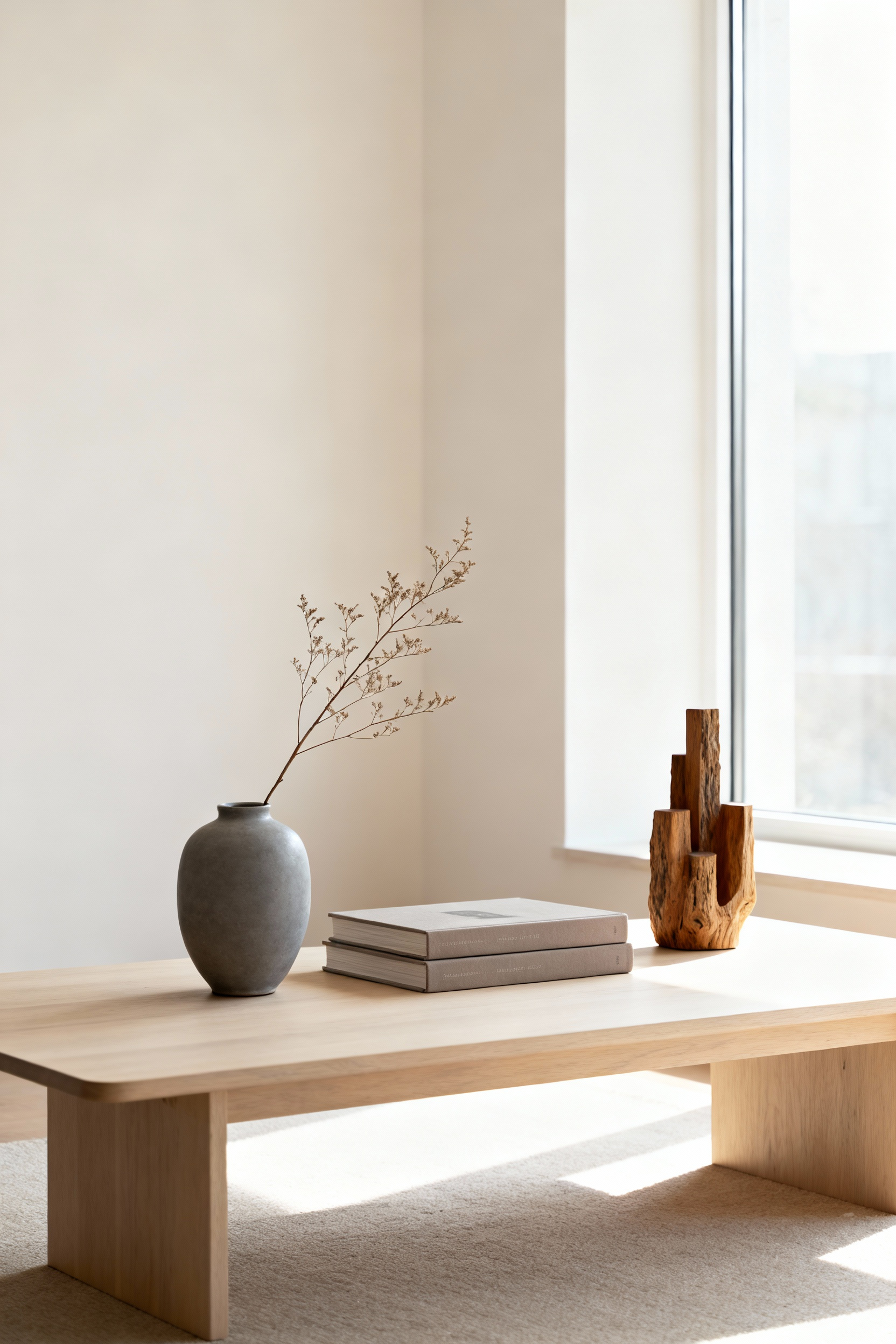
Choose objects that engage the senses: a hand-thrown ceramic bowl, a stack of beautiful books, a piece of driftwood from a favorite beach. Arrange them with a sense of balance and asymmetry, leaving plenty of empty space for them to breathe. A simple tray can be a wonderful tool for this, creating a defined zone for your vignette. This practice transforms your coffee table into a constantly evolving reflection of your life and a gentle reminder to pause and appreciate the small, beautiful things.
While we want to display beautiful things, we also need a place for the practical ones—remotes, coasters, magazines. The key to a serene coffee table design is integrating storage that is both effective and invisible. This aligns with the principle of “less but better”—unseen clutter is still mental clutter. The goal is to create visual peace by ensuring everything has a home.
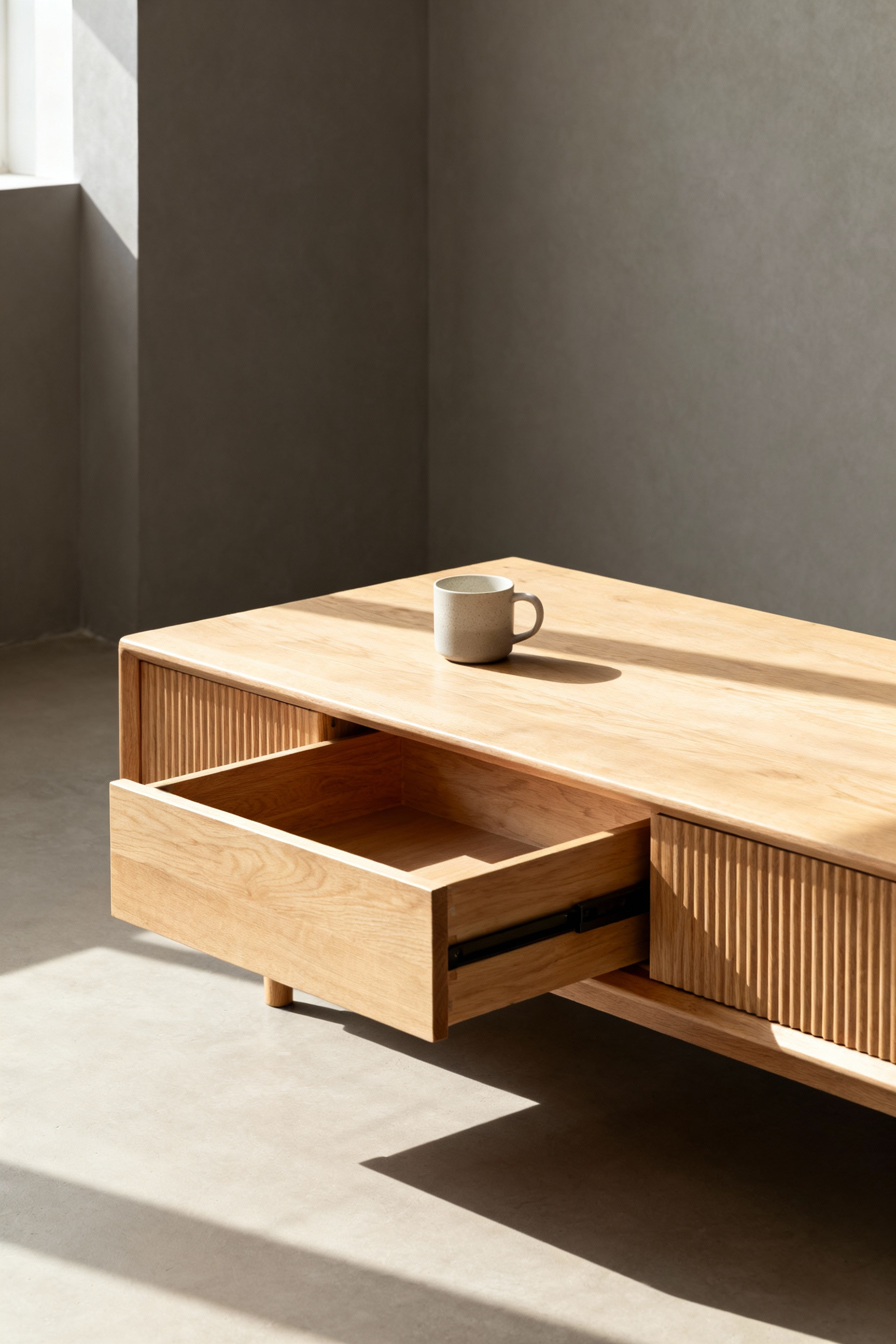
Look for tables with seamlessly integrated drawers or a clever lift-top mechanism that reveals hidden storage. The best designs do this without compromising the table’s clean lines. The mechanisms should be smooth and silent, the craftsmanship impeccable. This thoughtful integration of storage is incredibly liberating. It makes tidying up an effortless, intuitive act, allowing the coffee table to always remain a clear, inviting surface, ready for whatever the moment brings.
A coffee table should be used. It must invite interaction, not feel so precious that you’re afraid to touch it. This is hygge in practice—creating a comfortable, usable space for connection and daily life. A table with an accessible and durable surface encourages spontaneity and relaxation.
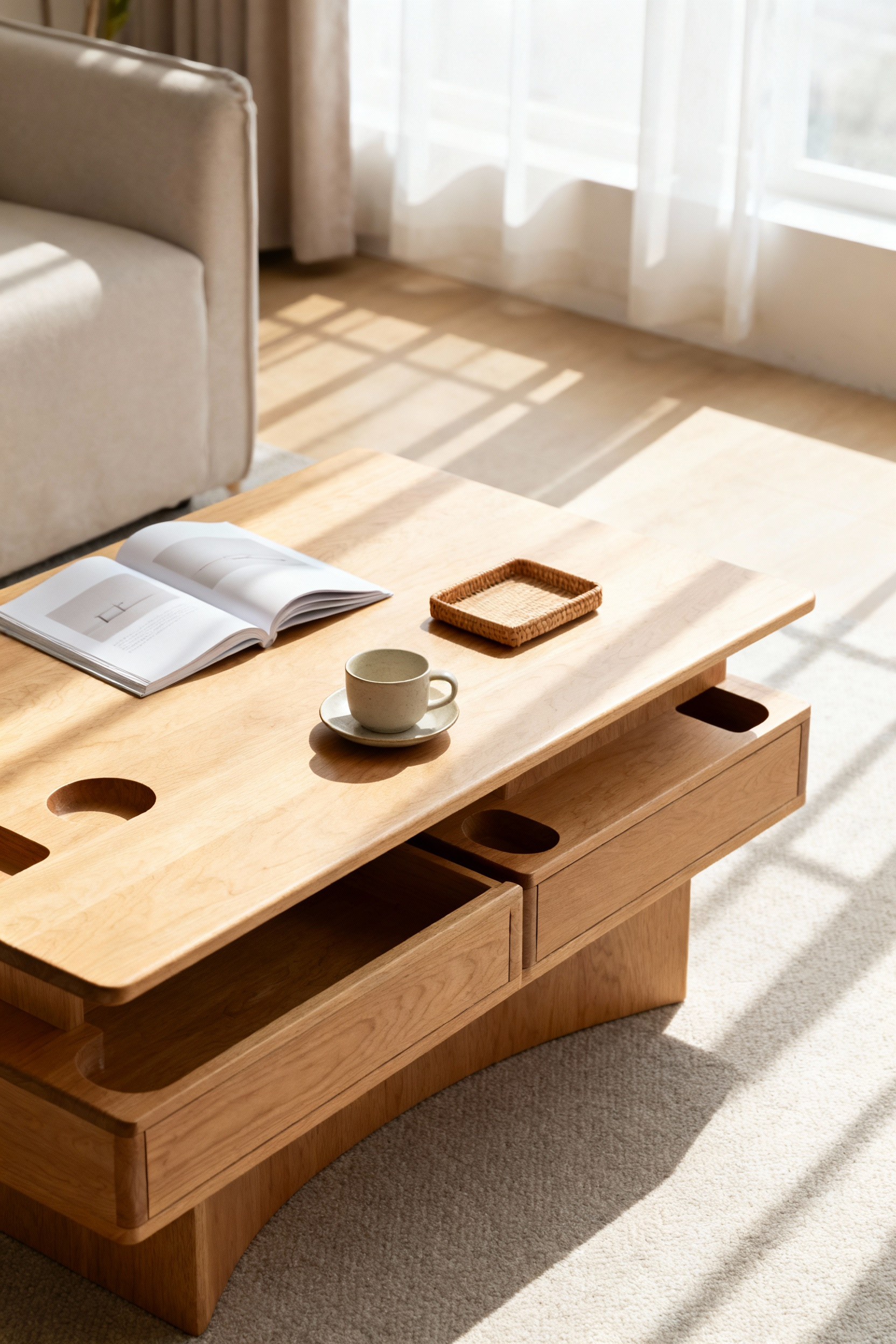
Materials that can stand up to daily life are key. A solid wood table treated with a forgiving oil finish will develop a lovely patina over time and can be easily refreshed. Surfaces like Fenix laminate offer a beautiful matte look that is incredibly resilient to fingerprints and scratches. The goal is to find that perfect balance between beauty and durability, creating a table that you can truly live with, not just look at. It’s a tangible invitation for friends and family to gather, connect, and simply be.
True serenity is undermined by constant worry and work. A coffee table design should serve you, not the other way around. A piece that requires constant, fussy maintenance or shows every single mark detracts from the calm it’s supposed to foster. Choosing materials and forms that are easy to care for is an act of self-care.
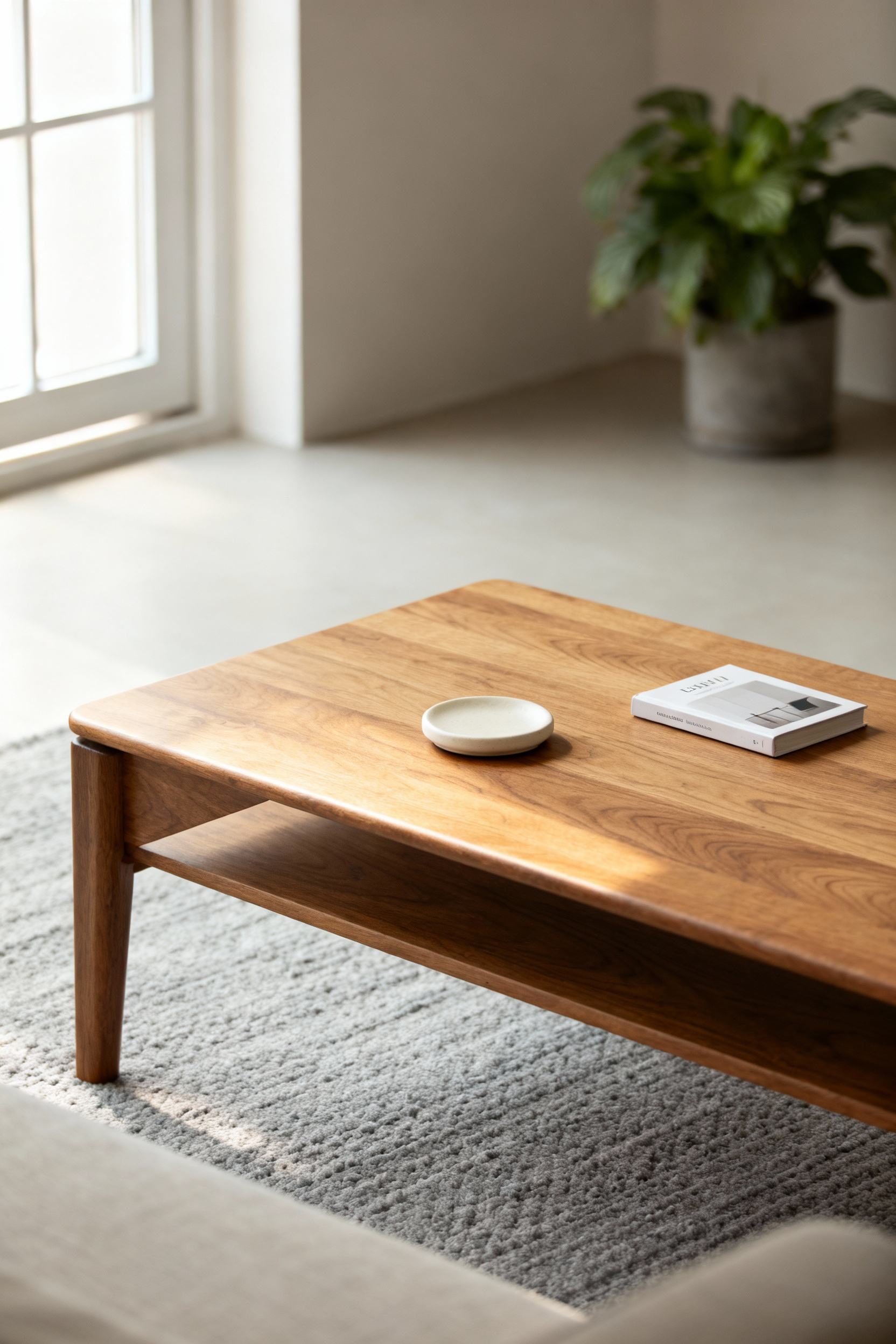
This is where simple, clean lines really pay off—fewer nooks and crannies for dust to gather. It’s also about choosing those hard-wearing materials we discussed: tempered glass, high-quality ceramics, durable woods, and modern laminates. I learned this a while back on a project where the client loved a high-gloss finish, but their lifestyle with young children made it a constant source of stress. We swapped it for a beautiful matte linoleum top, and the entire feeling in the room relaxed. A low-maintenance coffee table allows you to enjoy its beauty without it becoming another task on your to-do list.
Our final consideration is one that looks to the future. A thoughtfully designed home is not disposable; it’s built on a foundation of pieces that are meant to last, to be cherished, and to carry our stories forward.
Perhaps the most sustainable act in design is to choose something once and choose it well. Forecasting longevity in a coffee table design is a philosophical commitment—a choice to invest in quality craftsmanship and timeless form over fleeting trends. It’s about selecting a piece that is not just for you, right now, but that has the integrity to be passed down, accumulating meaning with each passing year.

This brings us full circle, back to materials and construction. It means choosing solid hardwood over veneer, celebrating masterful joinery, and appreciating a design that is so simple and pure it will never fall out of fashion. A coffee table built on these principles becomes more than an object. It becomes a quiet witness to our lives—to family gatherings, quiet mornings, and late-night conversations. It is an anchor of permanence in a changing world and a powerful expression of a more mindful, sustainable way to live.
As we’ve journeyed through these 20 principles, it’s clear that a Nordic coffee table design is about so much more than simple aesthetics. It is a philosophy for living made tangible. It is the belief that our homes should be sanctuaries of calm, function, and quiet beauty. The coffee table, as the heart of the living space, is the ultimate expression of this belief. From the honesty of its materials to its harmonious place within the room, every choice is a step toward a more considered, intentional life.
The real beauty of this approach is its timelessness. The reverence for craftsmanship, the deep connection to nature, and the focus on creating a comfortable, human-centered space—these are not fleeting ideas. So as you think about your own home, I encourage you to see your coffee table not as a simple purchase, but as a conscious choice. Let these principles guide you toward a piece that resonates with your values. In doing so, you are not just buying a piece of furniture; you are investing in the enduring comfort and well-being of your home—the very definition of hygge.